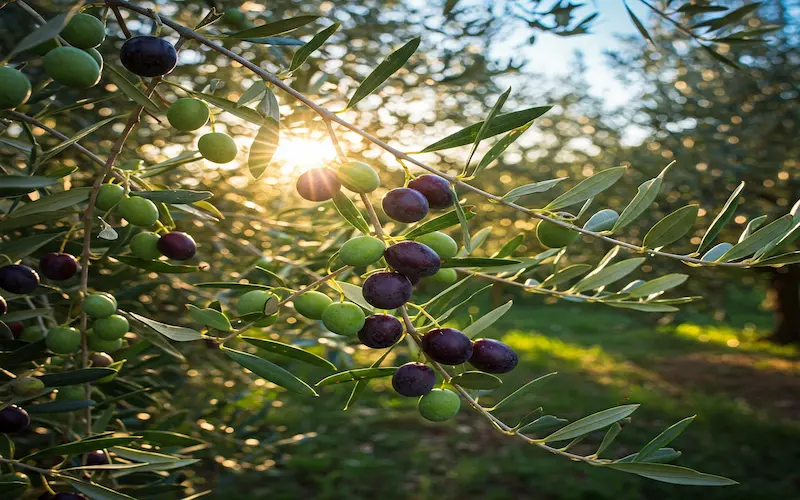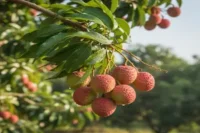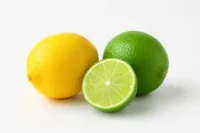Are Olives Vegetables? Exploring the Classification of Olives in the Culinary World
Published: 15 Jul 2024
Olives are small, oval-shaped fruits from the olive tree (Olea europaea). They are typically green or black. Olives are rich in healthy fats, antioxidants, and other nutrients, making them popular in many cuisines.
Olives can be consumed as a snack, topped with sandwiches and salads, or added to various dishes for flavor. They are also a key component in traditional Mediterranean diets, and they are known for their potential health benefits and distinctive taste. In this guide, I will clarify whether olives are vegetables or fruit.

The debate: are olives vegetables or fruits?
The classification of olives as vegetables or fruits has been a long-standing debate fueled by differing perspectives and interpretations. Some argue that olives are vegetables on one side of the spectrum, citing their savory flavor and culinary applications. On the other hand, proponents of the fruit classification point to the botanical definition, which categorizes olives as the fruit of the olive tree.
This dichotomy has sparked lively discussions and even friendly rivalries among food enthusiasts, each camp passionately defending its stance. However, the true essence of this debate lies not in the pursuit of a definitive answer but in exploring the complexities that govern our understanding of food.
Understanding the botanical classification of olives
To unravel the mystery surrounding olives’ classification, we must delve into the realm of botany. From a scientific perspective, olives are indeed classified as fruits. They are the edible ovaries of the olive tree Olea europaea, which belongs to the Oleaceae family.
Like other fruits, olives develop from the olive flower’s ovary after pollination. They contain a single seed, commonly called a pit or stone, encased within the fleshy portion we consume.
However, it is essential to note that the botanical classification only sometimes aligns with culinary traditions or common perceptions. Throughout history, various cultures have embraced their interpretations, often influenced by flavour profiles, culinary applications, and deeply rooted traditions.
Nutritional composition of olives
Despite their classification, olives offer a unique nutritional profile that contributes to their culinary appeal. Depending on your perspective, these tiny fruits (or vegetables) are rich in monounsaturated fatty acids, mainly oleic acid, which are linked to numerous health benefits.
Olives are also a good source of antioxidants, such as oleuropein and hydroxytyrosol, which may help protect against oxidative stress and inflammation. They also contain vitamins E and K and various minerals like iron, copper, and calcium.
Interestingly, olives’ nutritional composition can vary depending on factors such as cultivar, ripeness, and processing methods. For instance, green olives tend to have a higher polyphenol content than their ripe, black counterparts.

Culinary uses of olives
Olives’ versatility in the culinary world is undeniable, and their applications span a wide range of dishes and cuisines. Olives uniquely elevate flavours and create depth in culinary creations, whether used as a garnish, a key ingredient in savoury dishes, or a compelling addition to appetizers and snacks.
1. Mediterranean cuisine: Olives are an integral part of Mediterranean cuisine, celebrated for their rich flavour and versatility. From classic Greek salads to Italian pasta dishes, olives add a distinct touch of authenticity and regional flair.
2. Tapas and appetizers: Olives are a staple in Spanish tapas culture. They often serve as a simple yet flavorful starter or accompaniment to other small plates. Their briny taste and firm texture make them perfect for wine and cocktails.
3. Marinades and dressings: Olives’ bold flavour lends itself beautifully to marinades and dressings, infusing meats, vegetables, and salads with a delightful depth of flavour.
4. Pizza and flatbreads: Olives are a popular topping for pizzas and flatbreads, adding a savoury flavour to these beloved dishes.
5. Olive oil: While not the focus of this article, it is worth mentioning that olives are the source of one of the most prized culinary oils – olive oil. This liquid gold is a staple in many cuisines, lending its unique flavour and health benefits to countless dishes.
The importance of olives in Mediterranean cuisine
The Mediterranean region holds a special reverence for olives, which have been integral to local cuisine for centuries. In countries like Greece, Italy, Spain, and Morocco, olives are not just a food item but a cultural symbol deeply intertwined with traditions, rituals, and daily life.
The cultivation of olive trees and the production of olives and olive oil have shaped these regions’ landscapes, economies, and gastronomic identities. From the ancient Greek and Roman civilizations to modern times, the olive has been a cherished ingredient, celebrated for its versatility, flavour, and nutritional value.
Olives are used in many ways in Mediterranean cuisine, from simple appetizers and salads to intricate main courses and desserts. They are a staple in dishes like Greek salads, Italian pasta sauces, Spanish tapas, and Moroccan tagines, adding depth and complexity to the flavours.
Moreover, olives’ cultural significance extends beyond the culinary realm. Olive oil has been used for religious rituals, medicinal purposes, and even as a symbol of peace and prosperity in various Mediterranean cultures.
Different types of olives and their characteristics
The olive family is vast and diverse, with numerous varieties cultivated worldwide. Each olive type boasts unique characteristics, including flavour profiles, textures, and culinary applications. Here are some of the most popular and widely recognized varieties:
6. Kalamata Olives: Originating from Greece, these deep purple-black olives are renowned for their rich, fruity flavour and meaty texture. They are often used in Greek salads, marinades, and tapenades.
7. Manzanilla Olives: These Spanish green olives are known for their distinctive nutty flavour and firm texture. They are commonly used in tapas stuffed with ingredients like pimientos or anchovies.
8. Niçoise Olives: Hailing from the French Riviera, these small, dark-brown olives have a slightly bitter taste and a firm flesh. They are a staple in the classic Niçoise salad and are often used in tapenade and olive spreads.
9. Castelvetrano Olives: These bright green olives from Sicily are known for their buttery flavour and crisp texture. They are often enjoyed as a snack or used in salads and antipasto platters.
10. Picholines Olives: Originating from the South of France, these small, green olives have a mild, nutty flavour and a slightly crunchy texture. They are commonly used in Provençal cuisine and are famous for their versatility.
11. Cerignola Olives: These large, meaty olives from Italy are prized for their mild, buttery flavour and firm texture. They are often enjoyed as a snack or used in salads and antipasto platters.
These are just a few examples of the diverse olive varieties, each offering a unique flavour profile and culinary applications.
Olives in the context of vegetarian and vegan diets
As the demand for plant-based diets grows, the question of whether olives suit vegetarian and vegan lifestyles becomes increasingly relevant. While the botanical classification of olives as fruits may seem straightforward, the culinary world often blurs the lines between traditional categories.
Olives are generally considered acceptable for vegetarians who consume dairy and egg products. Their savoury flavour and culinary applications align well with vegetarian diets, making them versatile ingredients in various dishes.
However, for those following a strict vegan diet, which excludes all animal-derived products, the classification of olives can be more nuanced. Some vegans may choose to avoid olives due to the potential use of animal-derived products in their processing or curing methods.
It is important to note that not all olives are processed or cured similarly. While some traditional methods may involve animal-derived products, such as fish byproducts or dairy-based brines, many modern producers have adopted vegan-friendly practices to cater to the growing demand for plant-based options.
For vegans who wish to include olives in their diets, it is advisable to carefully read labels and inquire about the specific processing methods used by the manufacturer or supplier. Many reputable brands now offer certified vegan olives, ensuring that no animal-derived products are used during the curing or packaging.
Ultimately, the decision to include olives in a vegetarian or vegan diet is a personal choice that may depend on individual dietary preferences, ethical considerations, and the availability of vegan-friendly options in one’s local area.
Common misconceptions about olives as vegetables
Despite the ongoing debate surrounding the classification of olives, several misconceptions have emerged, perpetuating confusion and potentially hindering a deeper understanding of these culinary gems. Let’s address some of the most common misconceptions:
12. Misconception: Olives are vegetables because they are savoury. While olives possess a savoury flavour profile, this characteristic alone does not determine their vegetable classification. Many fruits, such as tomatoes and avocados, also exhibit savoury flavours yet are still botanically classified as fruits.
13. Misconception: Olives are vegetables because they are used in savoury dishes. A food item’s culinary applications do not necessarily dictate its botanical classification. Olives are widely used in savoury dishes, but so are many other fruits, such as tomatoes, bell peppers, and eggplants, which are still considered fruits from a botanical perspective.
14. Misconception: Olives are vegetables because they grow on trees. A plant’s growth habit does not determine whether its edible parts are classified as fruits or vegetables. Many fruits, including apples, oranges, and cherries, grow on trees, while some vegetables, like pumpkins and squashes, grow on vines.
15. Misconception: Olives are vegetables because they are not sweet. While sweetness is often associated with fruits, many fruits, including olives, can taste savoury or bitter. The presence or absence of sweetness is not a definitive factor in determining a food item’s botanical classification.
16. Misconception: Olives are vegetables because they are pickled. The pickling or curing process does not alter a food item’s botanical classification. Olives are often cured or pickled to enhance flavour and texture, but this process does not change their fundamental nature as fruits.
Separating culinary traditions and personal preferences from the scientific principles governing botanical classification is crucial. Understanding the underlying reasons behind these misconceptions allows us to appreciate the nuances and complexities that shape our understanding of food.
Conclusion: the verdict on whether olives are vegetables or not
After exploring the various aspects of olives, from their botanical classification to their culinary applications and cultural significance, it becomes evident that the debate surrounding their classification is complex.
From a scientific perspective, olives are undoubtedly fruits. They are the edible ovaries of the olive tree, containing a single seed and developing from the flower’s ovary after pollination. This botanical classification aligns with the fundamental principles of plant biology.

- Be Respectful
- Stay Relevant
- Stay Positive
- True Feedback
- Encourage Discussion
- Avoid Spamming
- No Fake News
- Don't Copy-Paste
- No Personal Attacks



- Be Respectful
- Stay Relevant
- Stay Positive
- True Feedback
- Encourage Discussion
- Avoid Spamming
- No Fake News
- Don't Copy-Paste
- No Personal Attacks



